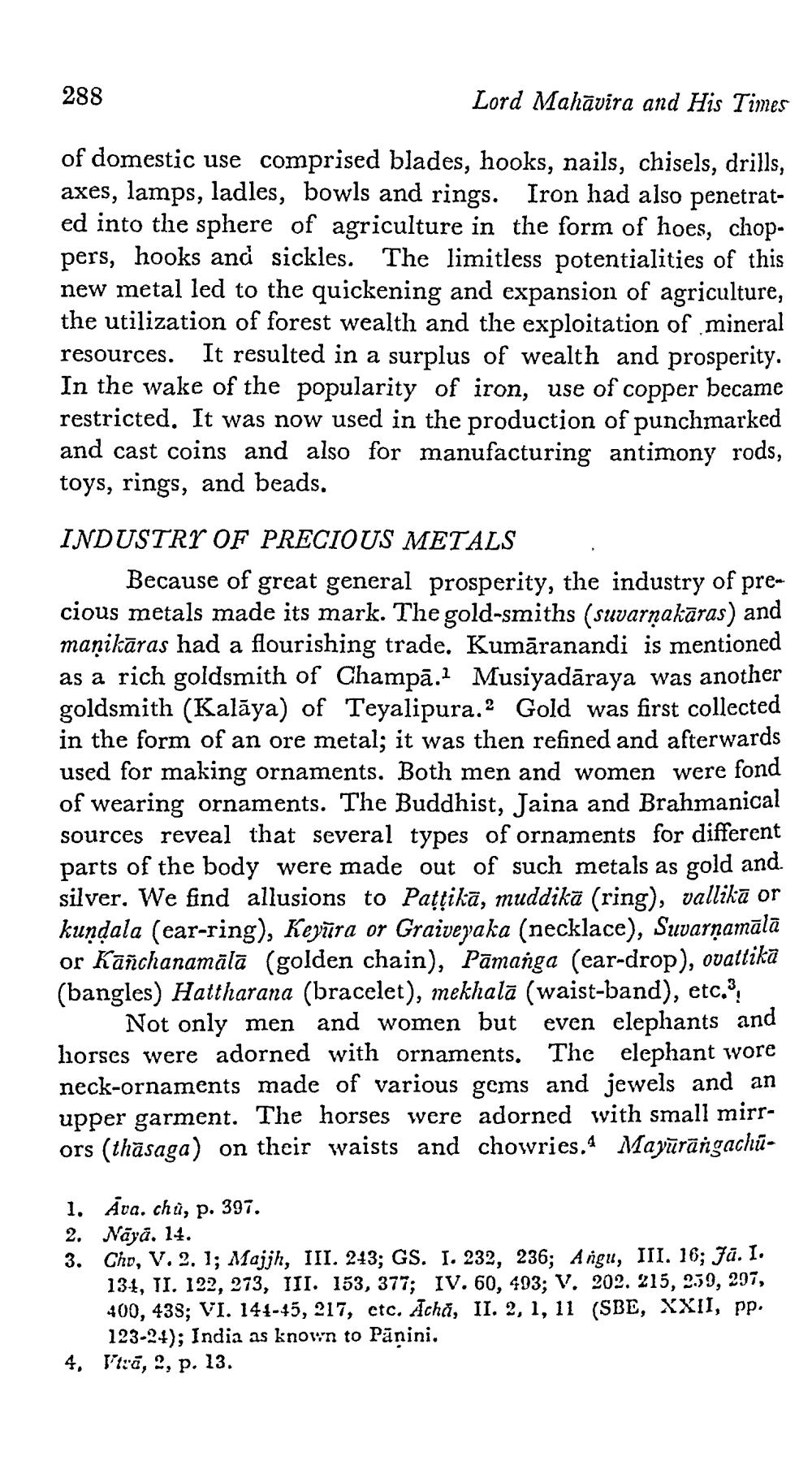________________
288
Lord Mahāvira and His Times
of domestic use comprised blades, hooks, nails, chisels, drills, axes, lamps, ladles, bowls and rings. Iron had also penetrated into the sphere of agriculture in the form of hoes, choppers, hooks and sickles. The limitless potentialities of this new metal led to the quickening and expansion of agriculture, the utilization of forest wealth and the exploitation of mineral resources. It resulted in a surplus of wealth and prosperity. In the wake of the popularity of iron, use of copper became restricted. It was now used in the production of punchmarked and cast coins and also for manufacturing antimony rods, toys, rings, and beads. INDUSTRY OF PRECIOUS METALS .
Because of great general prosperity, the industry of precious metals made its mark. The gold-smiths (suvarnakāras) and maņikāras had a flourishing trade. Kumāranandi is mentioned as a rich goldsmith of Champā.? Musiyadāraya was another goldsmith (Kalāya) of Teyalipura.2 Gold was first collected in the form of an ore metal; it was then refined and afterwards used for making ornaments. Both men and women were fond of wearing ornaments. The Buddhist, Jaina and Brahmanical sources reveal that several types of ornaments for different parts of the body were made out of such metals as gold and. silver. We find allusions to Patţikā, muddikā (ring), vallika or kundala (ear-ring), Keyūra or Graiveyaka (necklace), Suvarnamālā or Kāñchanamālā (golden chain), Pāmanga (ear-drop), ovattika (bangles) Hattharana (bracelet), mekhalā (waist-band), etc.?
Not only men and women but even elephants and horses were adorned with ornaments. The elephant wore neck-ornaments made of various gems and jewels and an upper garment. The horses were adorned with small mirrors (thasaga) on their waists and chowries. 4 Mayūrāngachū
1. Āva. chů, p. 397. 2. Näyā. 14. 3. Cho, V. 2. 1; Majjh, III. 243; GS. I. 232, 236; Angu, III, 16; Jā. I.
134, II. 122, 273, III. 153, 377; IV. 60, 493; V. 202. 215, 2.39, 297, 400, 433; VI. 141-15, 217, ctc. Achă, II. 2, 1, 11 (SBE, XXII, pp.
123-24); India as known to Pāṇini. 4, Pra, ?, p. 13.




